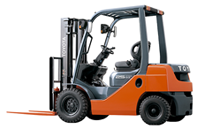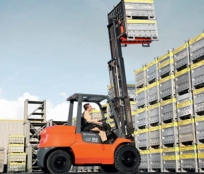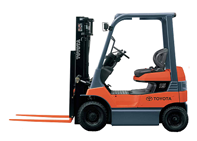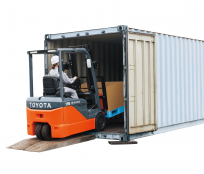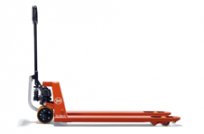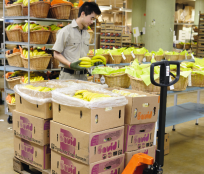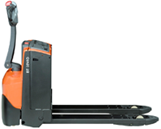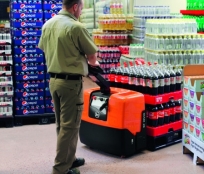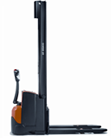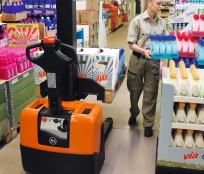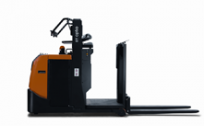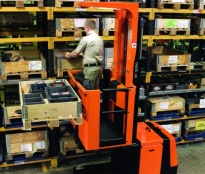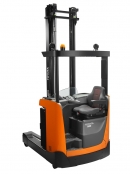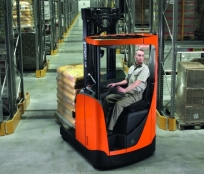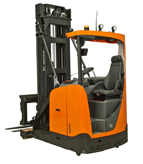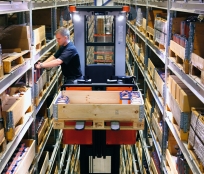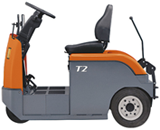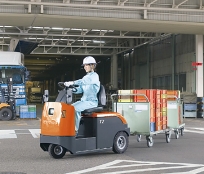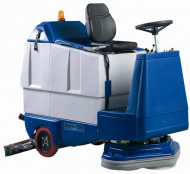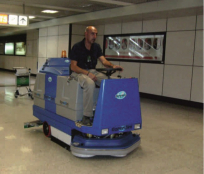The first Toyota forklift was produced in Japan in 1939, however, the outbreak of World War Two suspended production of lift trucks. During the period of military occupation 3-tons forklifts were used for handling operations on marine vessels, which made it possible to assess quality and understand the need for such machinery, and in this connection the engineers made the decision to organize production of the above machinery. In the early 1950's the Government of Japan provided financial support to Toyota Motor and the production of forklifts was resumed.
In 1959 Toyota established a new lift truck manufacturing plant with the production capacity of 150 units per month. In the same year the first overseas sale of lift trucks started with shipment to Thailand, which had a further positive effect on commencement of export operations in international markets.
In 1965 the first export order was placed with Toyota for 188 forklifts. The customer was the Singapore Port that chose Toyota forklifts among 23 suppliers. Such machinery supply facilitated further entry into the largest market, the USA one.
In 1970 a new Toyota forklifts manufacturing plant was established in Takahama. Today the Takahama Plant ranks among the world's largest enterprises specializing in production of lifting and handling machinery.
In 1975 the efforts of many countries to curb pollution resulted in launching by Toyota of production of new electric powered forklifts models and other lift trucks with alternating-current motors.
In 1986 more than 200 000 units of lifting and handling machinery were exported by Toyota.
In 1987 in response to increased competition among producers of lifting and handling machinery Toyota commenced construction of new manufacturing plants and factories outside Japan. In the middle 90s, Toyota established two manufacturing enterprises in France and the USA.
In 1994 Toyota introduced to the market a new series of light-duty forklifts 6FG/FD. The ergonomics and operator comfort of such new forklifts were improved as against the pervious models. By the end of the 1990s Toyota again proceeded to the work on introduction of new technologies.
In 1999 Toyota introduced to the market its 7-series forklifts. During development of these forklifts mush attention was paid to safety. And once again Toyota became the market leader due to introduction of new standards for forklift stability.
In 2000 BT Industries (Sweden) was purchased by Toyota Industries Corporation and became the latter's main European producer and representative. Toyota did not change the producer's name, as over the entire period of its existence BT was and is a pioneer in in the field of warehousing machinery and equipment.
In 2006, on the fiftieth anniversary of production of the first Toyota forklift, Toyota launched to the market its 8-Series Forklifts. This newest forklift series replaced the Toyota 7-Series Forklifts with improvement of latter's best qualities by introducing such new technologies as the System of Active Stability and the Operator Presence System which increase the safety level and simultaneously ensures high performance and efficiency.
Now Toyota is the permanent leader in the international market of lifting and handling machinery. Moreover, Toyota keeps leading position in volumes of production - the first Toyota forklift was produced in 1939, while in 1986 and 1995 Toyota produced the two-hundred-thousandth and one millionth forklifts respectively.
Toyota forklifts combine all the up-to-date technologies and are equipped with high-technology equipment meeting the customers' needs and requirements, because the company' principle is "Customer First!"
We offer
Load Capacity (gas/petrol)
Load Capacity (diesel)
Load Capacity (diesel)
Forklifts (diesel/gas/petrol)
Are
essential for cargo-handling operations in warehouses and other places.
Load Capacity
Electric forklifts
Electric forklifts are used for handling operations in rack-type indoor warehouses, at enterprises of the food, pharmaceutical and other industries.
Load Capacity, kg
Hydraulic pallet trucks
They are used for handling of palletized cargo in shops, warehouses, subsidiary and other premises.
Load Capacity
- – Pedestrian
- – With platform
- – Stand-in
- – Rider-seated
Powered Pallet Trucks
Allow increasing the speed of handling of materials, thereby lightening the work of the operator.
Load Capacity
- – Pedestrian
- – With platform
- – Stand-in
- – Rider-seated
(Powered) stackers
Used for various warehouse operations with
lifting height up to 6.3 meters.
Load Capacity
- – Low-level
- – Medium-level
- – High-level
Order Pickers
Designed for improvement of orders picking process.
Load Capacity
Narrow aisle trucks
When choosing warehouse stackers for operation in narrow working zones, first of all, it is the issue of how to use the warehouse to the maximum.
Load Capacity
- – Stand-in
- – Rider-seated
Towing tractors
Towing tractors is the best solution in conditions of a horizontal transportation of cargos.
Floor cleaning machines
Floor cleaning machines
Professional type of floor washing machine
designed for cleaning of floor with various surface textures manufactured by
recognized Italian producers.
